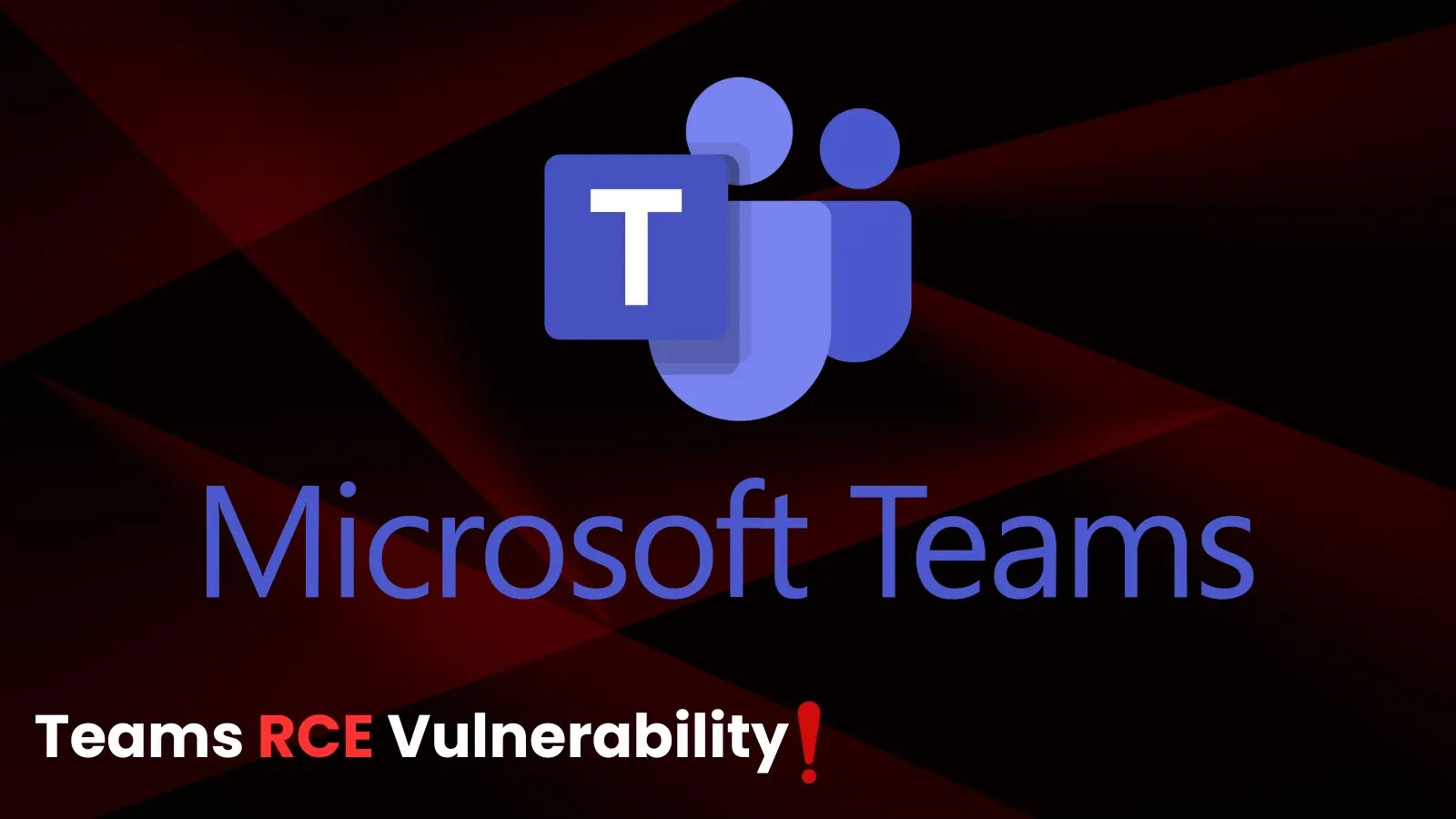
Microsoft Teams RCE Vulnerability Let Attackers Read, Write and Delete Messages
The digital landscape is a dynamic battlefield, and even the most ubiquitous communication platforms aren’t immune to attack. Microsoft Teams, a cornerstone for collaboration in countless organizations, has recently been at the center of attention due to the disclosure of a critical remote code execution (RCE) vulnerability. This flaw poses a significant threat, potentially allowing unauthorized attackers to compromise sensitive user data and disrupt critical business operations.
Understanding the Microsoft Teams RCE Vulnerability
Microsoft, as part of its August 2025 Patch Tuesday updates, revealed a critical vulnerability impacting its Teams collaboration software. Identified as CVE-2025-53783, this remote code execution flaw carries severe implications. At its core, the vulnerability is heap-based, meaning it exploits how the software manages memory, potentially leading to arbitrary code execution.
The severity of CVE-2025-53783 stems from its potential impact: an unauthorized attacker could read, write, and even delete user messages and data by executing malicious code over a network. This level of compromise can lead to data breaches, espionage, and significant operational disruption, underscoring the critical need for immediate attention and remediation.
The Threat: Data Compromise and Operational Disruption
An RCE vulnerability in a platform like Microsoft Teams is particularly alarming due to the nature of the data it handles. Organizations rely on Teams for sharing sensitive documents, private conversations, and strategic discussions. A successful exploit of CVE-2025-53783 could grant attackers:
- Unauthorized Access to Messages: Reading private and group chat messages, including confidential business communications.
- Data Manipulation: Altering or deleting messages, potentially leading to misinformation, sabotage, or cover-ups.
- Exfiltration of Sensitive Information: Accessing and stealing files shared within Teams, such as intellectual property, financial records, or personal identifiable information (PII).
- Lateral Movement: Using compromised Teams credentials or access to pivot into other systems and expand their attack surface within the corporate network.
The implications extend beyond data theft to include reputational damage, regulatory fines, and a direct impact on business continuity.
Remediation Actions and Best Practices
Given the critical nature of CVE-2025-53783, immediate action from IT and security teams is paramount. The primary remediation is to apply the August 2025 Patch Tuesday updates provided by Microsoft.
- Prioritize Patching: Ensure all Microsoft Teams installations, both desktop clients and server components (if applicable in your environment), are updated to the latest patched version. Implement a rigorous patch management process to prevent future vulnerabilities from lingering.
- Verify Update Deployment: After applying patches, confirm that the updates have been successfully installed across all devices and instances.
- Implement Least Privilege: Review and enforce the principle of least privilege for all user accounts accessing Teams. Limit permissions to only what is necessary for users to perform their roles.
- Multi-Factor Authentication (MFA): Mandate MFA for all Teams users. Even if credentials are compromised, MFA adds a crucial layer of defense against unauthorized access.
- Network Segmentation: Where feasible, segment networks to limit the potential spread of an attack from compromised endpoints.
- Employee Awareness Training: Educate users about phishing attempts, suspicious links, and the importance of reporting unusual activity. Social engineering is often a precursor to exploiting such vulnerabilities.
- Regular Security Audits: Conduct periodic security audits of your Microsoft Teams environment and integrated services to identify and address potential weaknesses.
Tools for Detection and Mitigation
Leveraging appropriate tools can aid organizations in detecting potential compromises and enhancing their overall security posture against vulnerabilities like CVE-2025-53783.
| Tool Name | Purpose | Link |
|---|---|---|
| Microsoft Defender for Endpoint | Advanced endpoint detection and response (EDR) for identifying suspicious activity. | Microsoft Defender for Endpoint |
| Vulnerability Management Solutions (e.g., Tenable, Qualys) | Scanning for unpatched systems and identifying configuration weaknesses. | Tenable Qualys |
| Security Information and Event Management (SIEM) Systems | Aggregating and analyzing security logs for unusual patterns indicative of an attack. | (Provider Dependent – e.g., Splunk, Microsoft Sentinel) |
| Network Intrusion Detection/Prevention Systems (NIDS/NIPS) | Monitoring network traffic for suspicious patterns and blocking known attack signatures. | (Vendor Dependent – e.g., Cisco, Palo Alto Networks) |
Looking Ahead: Proactive Security Measures
The disclosure of CVE-2025-53783 in Microsoft Teams serves as a stark reminder that even the most robust software can harbor critical vulnerabilities. Organizations must adopt a proactive security stance, prioritizing timely patching, implementing strong access controls, and continuously monitoring their environments for threats. Maintaining vigilance and adapting to the evolving threat landscape are essential for safeguarding digital assets and ensuring secure collaboration.





